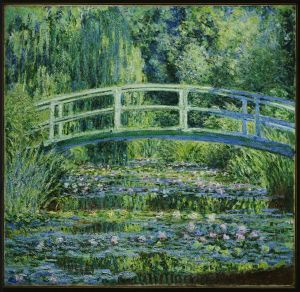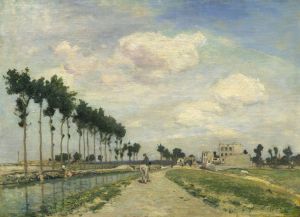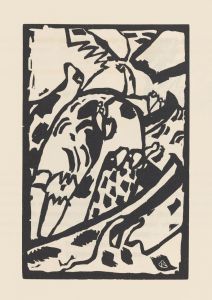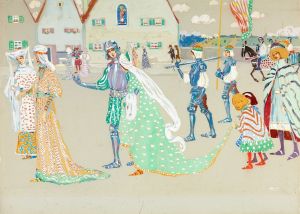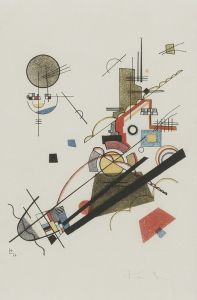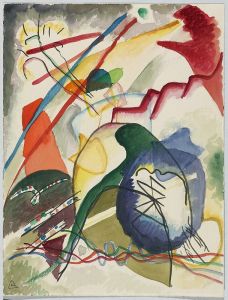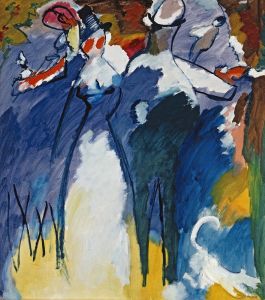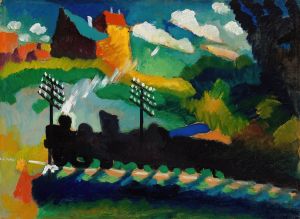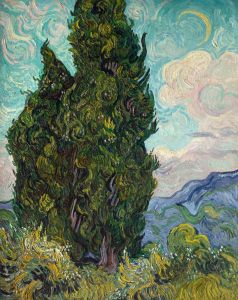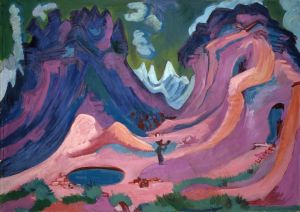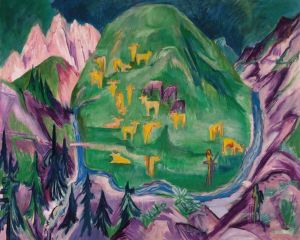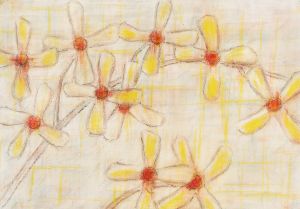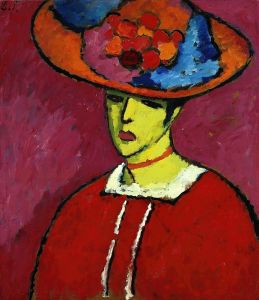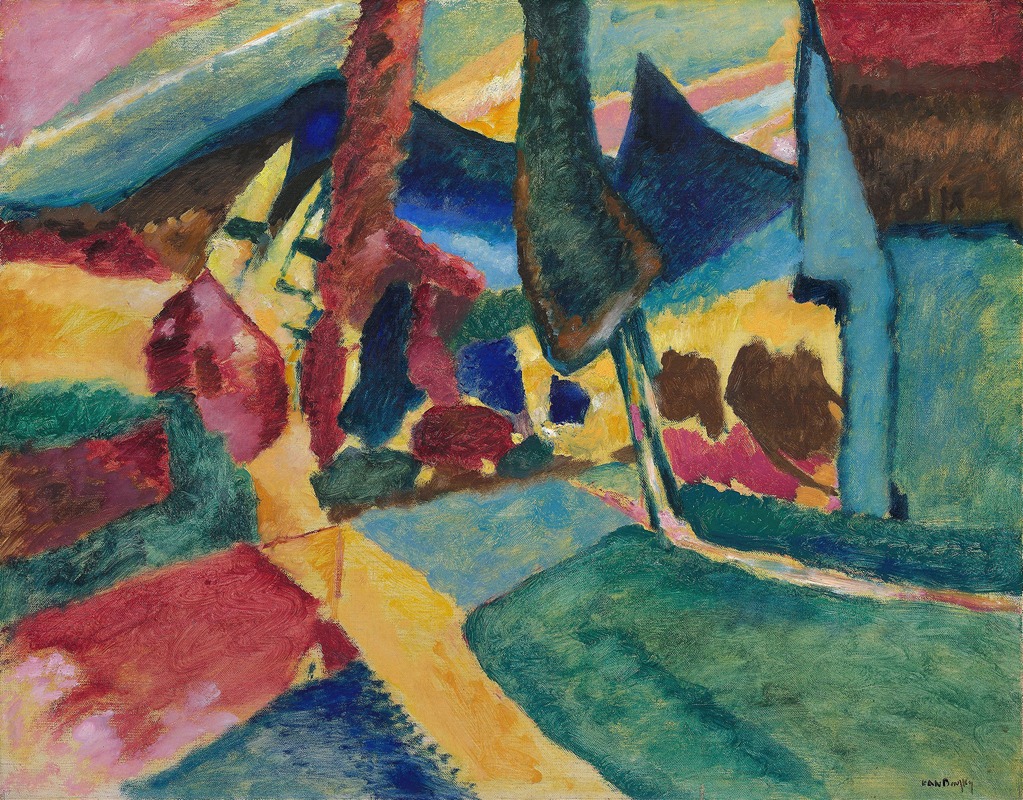
Landscape with Two Poplars
A hand-painted replica of Wassily Kandinsky’s masterpiece Landscape with Two Poplars, meticulously crafted by professional artists to capture the true essence of the original. Each piece is created with museum-quality canvas and rare mineral pigments, carefully painted by experienced artists with delicate brushstrokes and rich, layered colors to perfectly recreate the texture of the original artwork. Unlike machine-printed reproductions, this hand-painted version brings the painting to life, infused with the artist’s emotions and skill in every stroke. Whether for personal collection or home decoration, it instantly elevates the artistic atmosphere of any space.
"Landscape with Two Poplars" is a painting by Wassily Kandinsky, a pioneering Russian artist widely regarded as one of the founders of abstract art. Created in 1912, this work is an example of Kandinsky's transition from representational art to abstraction, a hallmark of his artistic evolution during this period. The painting reflects Kandinsky's interest in exploring the emotional and spiritual qualities of color and form, which were central to his artistic philosophy.
The artwork depicts a landscape featuring two prominent poplar trees, rendered in a style that blends elements of abstraction with recognizable forms. The composition is characterized by vibrant, non-naturalistic colors and dynamic, flowing shapes, which suggest movement and energy. Kandinsky's use of bold, contrasting hues and simplified forms demonstrates his belief in the expressive power of color and his desire to evoke an emotional response in the viewer.
"Landscape with Two Poplars" was created during Kandinsky's time in Munich, where he was a member of the influential art group Der Blaue Reiter (The Blue Rider). This group, co-founded by Kandinsky and Franz Marc, sought to break away from traditional artistic conventions and explore new ways of expressing spiritual and emotional truths through art. The painting reflects the group's emphasis on the symbolic and emotive potential of color and form.
The year 1912 was a pivotal moment in Kandinsky's career, as he published his influential theoretical text "Concerning the Spiritual in Art" during this time. In this work, Kandinsky articulated his belief that art should transcend material reality and connect with the viewer on a deeper, spiritual level. "Landscape with Two Poplars" embodies these ideas, as it moves away from realistic representation and toward a more abstract, symbolic approach.
The painting is part of Kandinsky's broader body of work from the early 20th century, which laid the groundwork for the development of abstract art. It exemplifies his innovative use of color, form, and composition to convey a sense of harmony and inner resonance. Today, Kandinsky's contributions to modern art are celebrated worldwide, and his works are held in major museum collections.
Further details about the specific location of "Landscape with Two Poplars" or its current ownership are not widely documented.





